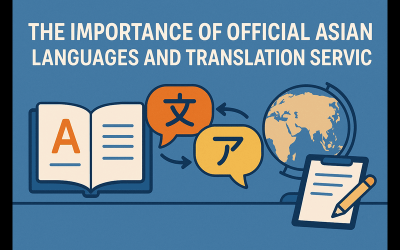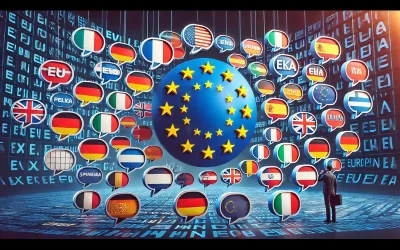Why AI Search Is Changing the Way We Think
You’ve probably typed a question into ChatGPT lately, maybe something like “Best books on leadership” or “Quick summary of climate change solutions.” And then watched in awe as the response loaded faster than any Google search could deliver.
That’s AI looking for work. It’s not a fad, just a shift in how we find, sort, and use information. But amidst all the AI tool hoopla, something critical gets overlooked: these tools are great but not perfect.
In this post, we’ll break down:
- What AI is
- What AI search actually is (beyond the buzz)
- How to use it for smarter research, writing, and productivity
- Where it works well—and where it absolutely doesn’t
- Why human expertise still matters (especially in language and culture)
- How companies like Protranslate help fill the gaps AI can’t touch
By the time you’ve finished reading, ideally with Sunday coffee in hand, you’ll know exactly how to use AI search both efficiently and responsibly.
Professional Translation Services
Get your documents translated and certified by a professional translator in 120+ languages with 24 hour delivery.
Get a QuoteWhat Is AI?
Artificial Intelligence (AI) refers to the ability of machines, particularly computer systems, to mimic human intelligence. This includes learning from data, recognizing patterns, problem-solving, language understanding, and even forecasting. It’s the technology behind autonomous cars, recommendation systems, voice assistants, and now, generative text platforms like ChatGPT and Claude.
The majority of AI is driven by machine learning, where systems improve over time by learning from vast volumes of data. The subset driving most AI search engines is called natural language processing (NLP), allowing machines to understand and respond to human language in a smart way.
Though AI is not able to think or feel like humans, it has the ability to process lots of information fast and draw connections to enable individuals to work more intelligently. Having a good grasp of the fundamentals of AI provides an enormous edge in understanding when and how to apply it.
How does AI work?
AI works by using algorithms, or sets of rules or instructions, to process large amounts of data and learn patterns. Through techniques like machine learning, it gets improved over time as it learns from new information. For example, a language model like ChatGPT is trained with billions of words so that it may provide responses like human beings. Whereas the system never “knows” in the way that human beings do, it uses statistical probability to predict the most relevant or reasonable outcome based on your information.
How to Learn AI
Learning AI can be daunting, yet there are plenty of entry points whether you are a beginner or a pro. Start with programming fundamentals (Python is a popular one), statistics, and machine learning basics. Online sites such as Coursera, edX, and Udacity offer excellent courses in AI fundamentals. To gain practical experience, offerings like Google’s Colab offer a environment to experiment with code in the cloud with no installation.
Remember, AI is a rapidly evolving space, so being curious, following industry news, and engaging with communities (like AI forums or local meetup groups) will keep you abreast of new developments. Both for a hobbyist appreciation or career transition, ongoing learning and doing are key.
What Is AI Search?
AI search is one way of finding information through artificial intelligence, namely natural language processing and machine learning, to give answers to a query. Contrary to the traditional search engines that are keyword-based ranking and indexing of web pages, AI search tries to understand your question and respond conversationally.
When you pose a question to software like ChatGPT, Claude, Gemini, or Perplexity, you’re dealing with a large language model (LLM). With billions of words trained on them, the models are designed to make educated guesses about what word comes next in a sentence, creating text that is read as intelligent, well-pieced-together, and even perceptive.
The result? AI can respond to questions, summarize text, come up with ideas, and even carry on conversations.
The Difference Between AI Search and Traditional Search
Let’s say you want to know more about the impact of remote work on productivity. Searching for it on Google would provide a list of links to reports, articles, and blogs. You would have to click in, scan the content, and maybe piece together your own synthesis. You can just ask with AI search: “What are the most significant productivity changes in remote work since 2020?” The AI will summarize the research for you, usually distilling a wide range of sources and articulating it in a conversational way. This isn’t a search that’s just faster, it’s a new type of interaction with information.
Certified Translation Services
Get your documents translated and certified by a professional translator in 120+ languages with 24 hour delivery.
Get a QuoteHow To Use AI
AI search technologies are revolutionizing how we search for information, come up with ideas, and learn new topics. Strategically used, they will not only save time but also open up new levels of productivity in workaday activities.
From searching to ideating content, below are some of the most effective and useful applications of AI search in your everyday life.
1. Smart Research and Summarization
AI search is particularly good at breaking down difficult topics. You can get ChatGPT or similar tools to dissect something in plain English or any style you like.
Instead of searching through 10 different sources of information on the psychology of decision-making, ask: “Outline the big concepts in decision psychology for beginners.” You’ll have a clean, consumable explanation you can build upon or double-check later.
This is useful not just for students and researchers, but for anyone trying to learn a new industry, enter new markets, or learn in the moment.
2. Drafting and Brainstorming
Need a spark to get a blog post, article, email, or outline going? AI search tools can produce structure, ideas, and even early drafts. They’re great for breaking writer’s block and getting your creative juices flowing.
But remember, as with translation, subtlety is important. Form, a machine can provide. Voice, nuance, and panache? That requires a human touch. Especially abroad, where tone and terminology tie very specifically to culture.
3. Learning New Topics or Skills
If you’re moving into a new Brazilian or Turkish market, before you hire a consultant or read dozens of reports, you may want to ask: “What are the local business habits in Turkey?” Or “What do I need to know before I expand a brand to Brazil?”
AI can give you a quick, context-driven primer. It’s no replacement for actual experience or professional advice, but it is an excellent starting point for learning.
And when you’ve got that context in your hand and are preparing to localize your content to serve that new market, that’s when Protranslate steps in with professional localization in over 70 languages.
Get a Translation Quote for Your Documents
Do you want a quick and easy way to obtain a professional translation service for your documents? Click on the desired button to access our online translation service!
Get a QuoteWhere AI Search Falls Short (And Why Human Insight Matters)
While impressive, there are a few important limitations, especially where accuracy, tone, and cultural sensitivity are of utmost importance.
1. AI Can Be Confidently Wrong
AI models do not know facts. They predict based on probability. That is, they may sometimes give completely incorrect information with complete certainty.
For example, ask for a list of recent studies on a topic, and it might cite academic papers that don’t actually exist. If you’re in a regulated industry, like law, healthcare, or finance, that kind of error isn’t just embarrassing. It’s dangerous.
2. AI Misses Cultural and Contextual Nuance
AI can perform word-by-word translation from language A to language B, but it does not understand context, tone, and audience. The same sentence may have very different meanings in other cultures. That is why professional human translators cannot be replaced.
Need to translate your Middle East marketing campaign? Or Latin America legal contracts? Only a native-speaking expert will know how to get it done correctly.
3. AI Lacks Legal and Ethical Accountability
When you operate AI to write or translate material that counts, there’s pretty much no responsibility when something goes wrong. The AI will not be held responsible when a false stipulation within your contract, a false translation on your product manual, spirals out of control. You will.
Which is why thousands of companies use Protranslate to work with confidential documents, NDAs, stamped documents, and more. We don’t risk accuracy.
Teaching AI How to Help You: Prompt Engineering 101
Learning to create improved prompts is one of the most useful skills you can learn today. The AI is as good as the questions you ask.
Some best practices are:
- Be specific. Don’t ask “tell me about e-commerce,” ask:
“What are the top three challenges for small e-commerce businesses in Europe?”
Give context. Give the AI information about yourself or what you are looking for:
“I’m a content manager. Give me a 3-paragraph blog intro on AI in retail.”
- Ask follow-up questions. Use the chat format to refine your answers over time.
These tricks will save you hours of research and brainstorming. But when it comes to publishing or translating, always revert to professional tools and teams.
The Future of AI Search (And What It Means for Businesses)
AI search is evolving rapidly. Soon, it will be integrated into browsers, apps, emails-even operating systems on your devices. That’s the reason why it is important to start learning about how to utilize it responsibly today.
But as the technology improves, the need for human guidance, cultural acumen, and strategic translation becomes more and more critical. Machine-generated content will overwhelm the web. Those who bridge AI velocity with expert accuracy will be leaders.
Why You Still Need Experts in an AI World
AI search can generate a paragraph, summarize a book, or suggest ten titles for a blog post in seconds. But language, trust, and going global: that’s where human touch can’t be exchanged.
Professional translation is not about language flip-flopping, it’s about meaning transmission, respect for context, and clearness. That’s why:
- Enterprises depend on Protranslate to deliver certified and notarized translations
- Cross-border teams count on us for fast, safe document localization
- We’re utilized by marketing managers to make sure every slogan resonates perfectly in every country
AI can be fast. But it doesn’t get your audience, your purpose, or your values. We do.
When to Use AI and When to Use Protranslate
Here’s a rule of thumb:
- Use AI if you need to generate ideas, summarize, or draft something you will later edit
- Use Protranslate when accuracy, compliance, culture, or reputation are on the line
Expanding your business? Moving into a new market? Translating a pitch deck, resume, or product manual? That’s our domain.
Ready to Work Smarter—Not Riskier?
Learning AI search is one of the smartest things you can do this year. But also knowing when to use humans, that’s where wisdom comes in.
At Protranslate, we combine cutting-edge tools with expert translators and linguists to offer you speed, accuracy, and peace of mind.
Expanding into new markets or speaking to the world, we are your trusted partner.
Experience Protranslate today and sense the power of professional translation in an AI world.
 Rana Maalouf
Rana Maalouf

